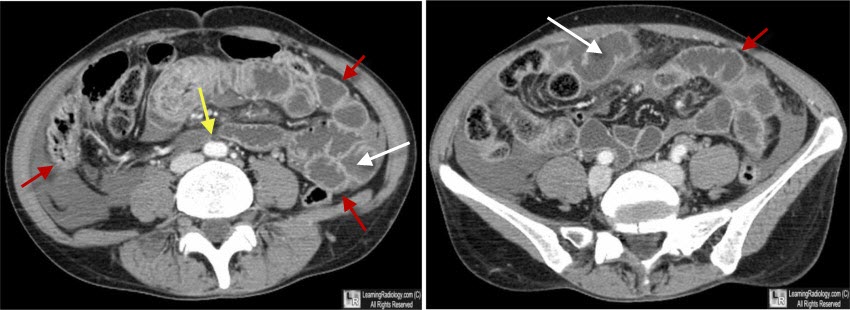|
|
CT Hypotension Complex
Shock Bowel
General Considerations
- Multiple abdominal visceral changes most often associated with hypotension and frequently trauma and hypovolemia
- Most commonly affects the small bowel
- Mechanisms proposed include sympathetic stimulation of the bowel, reducing circulation; altered bowel permeability from insufficient oxygen; decreased fluid reabsorption
Associations
- Hypovolemia
- Trauma
- Sepsis
- Cardiac arrest
- Severe head injury
Imaging Findings
- Fluid-filled, bowel segments with marked submucosal edema (bowel wall >3mm)
- Mucosal enhancement
- Collapse of the inferior vena cava (< 9mm at multiple levels) and aorta (<1.3 cm at multiple levels)
- Pericaval fluid (halo sign)
- Variable enhancement of the pancreas with peripancreatic fluid (shock pancreas)
- Delayed nephrogram
- Decreased enhancement of the liver and spleen
- Increased enhancement of the adrenals
Differential Diagnosis
- Bowel ischemia due to vascular occlusion –will usually not show other signs of hypotension such as small IVC or aorta, shock pancreas
Treatment
Prognosis

"Shock Bowel." There is a large amount of fluid in the small bowel (white arrows). The wall of the bowel enhances markedly and diffusely (red arrows). The aorta is slightly smaller than normal (yellow arrow).
CT Hypotension Complex (Shock Bowel) Is Not Always Due to Traumatic Hypovolemic Shock. Jennifer T. Ames and Michael P. Federle. AJR, May 2009, Volume 192, Number 5
|
|
|